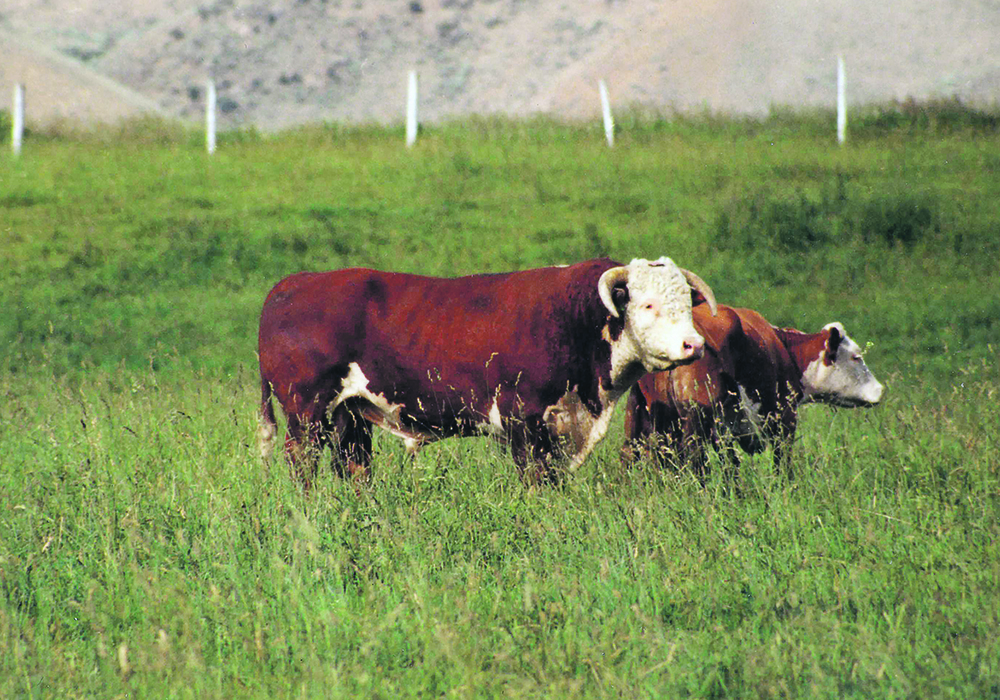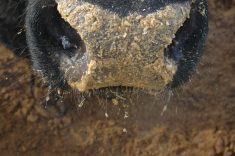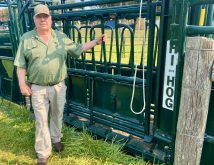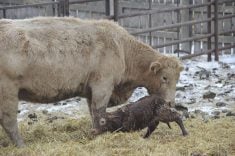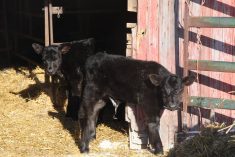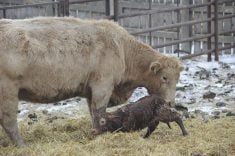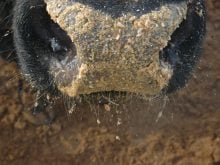If using terminal bulls, just sell all the calves, but if using maternal bulls and keeping half, good marketing is essential
When buying a new bull, most ranchers have specific goals and are seeking specific traits in the offspring.
Travis Olson, a seed-stock breeder near Athabasca, Alta., has been raising Angus bulls for years and says there are several tools for choosing the right bull for the purpose.
“All ranchers have slightly different views on what they want and how to select for those traits. I look at this situation as three options.
“You can buy all your replacement females and breed them all to a terminal sire and sell every calf. Option two is to produce maternal cattle and breed all your cows to maternal sires, knowing that you will get less money for the market calves because they will be lighter. Their gain and yield will be less than if you’d used a terminal sire.
Read Also

Beef cattle more prone to trace mineral deficiencies
The trace mineral status of our cows and calves is a significant challenge for western Canadian producers and veterinarians.
“Good maternal cows do not have steers that top the sales at market because maternal and terminal traits are antagonistic,” he says.
“Another option is to breed the top half of the herd to maternal sires to select replacement heifers from those cows, and breed the bottom half to terminal sires and sell all those calves. The reason you need to breed half your cows to keep heifers from is that some of those calves will be steers, and not all the cows you breed will have calves that make it to weaning age.”
The Saskatchewan average is 84 calves per 100 cows exposed to a bull, according to available data. About half will be heifers and if half the calves were sired by the maternal bull, that would provide 21 potential replacements.
“Across the board, the average cow produces only about five calves during her life,” says Olson. “Some have many more, but some will only have one calf before they leave the herd. Most herds have very few 10 to 12-year-old cows; the average cows don’t last that long.
“If the average cow only produces five calves in her life, you need to keep 20 percent of your heifers. So if you have 100 females and need to replace 20 each year, you need to keep nearly 50 percent of your heifers.”
Other livestock species (sheep, goats and pigs) have more offspring each year, and it’s easier to have a maternal line bred to a terminal line and slaughter the offspring.
“You only need a small percentage of females to maintain the breeding population. It’s more difficult with cattle to keep a good female line while producing the higher-value terminal calves,” Olson notes.
Many people use a terminal bull and keep the daughters, which Olson views as a mistake.
“They see a really nice big, good-looking heifer and keep it, then wonder why they end up with 1,700-pound cows that feed more like Holsteins. In some instances, the terminal sires are multi-purpose breeds that produce a lot of milk and the cows have much higher caloric intake requirements than most maternal breeds.”
He says it’s better not to keep any heifers from terminal sires.
“If you breed part of your herd to maternal and part of the herd to terminal sires, be diligent and sell all of those big beautiful terminal heifers” because they might move the herd in the wrong direction.
He views crossbreds like Angus-Hereford as more fertile and having more longevity, as long as they are bred to maternal sires.
“Then the ideal situation is to breed them to a third breed terminal sire like a Charolais or Simmental to create the most profitable feeder calves. But don’t be tempted to keep any of those terminal calves as replacement females because it just doesn’t work very well,” says Olson.
“If you are selecting a terminal bull, you also need to avoid extremes. If you breed one of those to a maternal cow, you could have calving problems. You don’t want big-boned huge calves.
“Buy from a reputable breeder who is honest about birth weights. I always figure you’ll do well buying from the middle of the herd. If you are looking for a good Charolais bull for your terminal cross, don’t buy the best and biggest or the best-looking one. Often you are better off buying out of the middle, a bull that is a little less extreme in type, as long as the birthweight matches your British-based females.
“The number one factor in profit or loss is a live calf. Weaning weight is far down the list. There is more than one way to increase profits but you have to start with a live calf.”
If using terminal bulls, it’s a simple matter to sell all the calves. If using maternal bulls and keeping half, good marketing is essential.
“Just taking those calves to market, you probably won’t do very well. If you have something other people want, you need to market them appropriately, because there are many people who will buy those maternal heifers, especially if they are bred the right way for their first calves and then a person can start using terminal sires for their next calves.
“Many people prefer to buy their replacements rather than raising them, so there is always a good market for maternal heifers,” says Olson.
“Be consistent, know what you are doing, and have a plan. Then you can select the appropriate bulls for the job you want them to do.”

